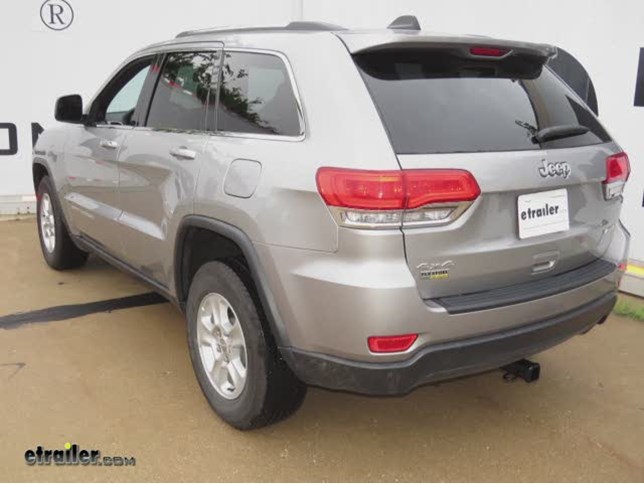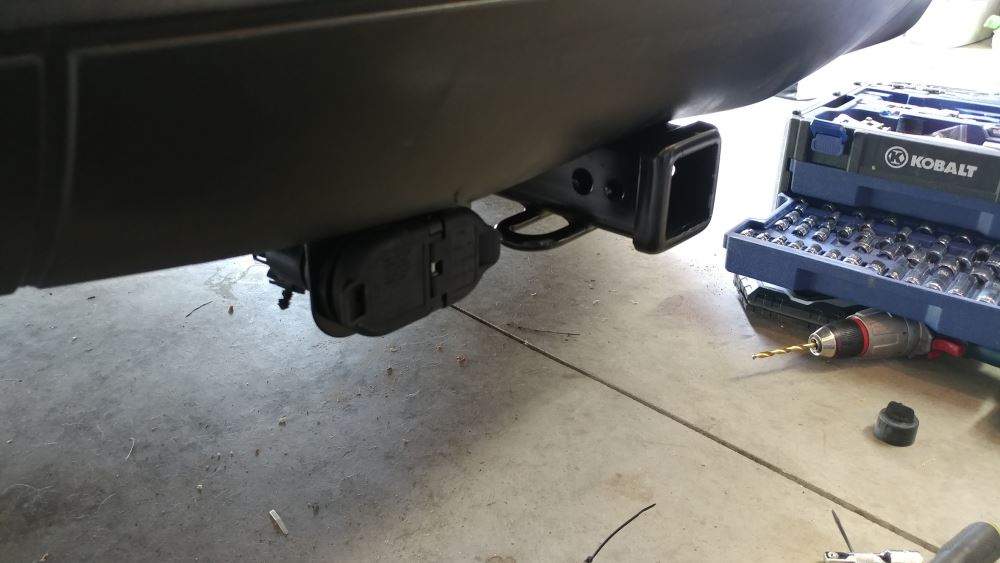

- Draw tite hitch 2001 jeep grand cherokee laredo drivers#
- Draw tite hitch 2001 jeep grand cherokee laredo pro#
Draw tite hitch 2001 jeep grand cherokee laredo drivers#
I see trailers that well exceed maximum towing capacity and the drivers recklessing driving too fast.

We got accustomed to traveling in the slow lane.

We managed to pull the camper without much difficulty but you definitely feel the difference with pulling uphill. We had a weight distribution and anti sway bar installed. We made certain the TOYO brakes and tires were in optimum condition. Our approximate tow weight with all the gear, hitch and safety bars was 4600lbs. Our 2008 Toyota Highlander with the tow package and over 200k miles under her belt, pulled a small single axle Coleman trailer that had a dry weight of about 3699lbs. Is the max tow capacity on your 4Runner 5,000 lbs? It doesn’t take much to quickly add additional weight. I think if you equip your 4R with the right equipment prior to towing then you will have no problems using a 4R to tow just about anything. The only issue I came across was the coolant temperature getting high but I have since replaced a few parts which solved the problem. After doing this, I was able to keep speeds of about 60 mph on inclines. I learned to increase my speed just prior to incline to help negate the loss of MPH on the uphill.

Other than bogging down to about 50-55 mph on the steep inclines, I would happily say the 4R did an awesome job of towing. I kept the 4R in 4 instead of D for most of the trip considering there was very little flat ground. I had no problems handling the trailer even during a few thunderstorms. The trailer was loaded to about 5500 lbs. On my first trip from TN to IN, it was 460 miles roundtrip while driving up and down several grades of 6% or less for about 50 miles total. I then purchased my trailer, 2018 Forest River Salem Cruise Lite 201BHXL 24ft tandem axle trailer with a dry weight of 4233 lbs and max GVWR of 7528 lbs.
Draw tite hitch 2001 jeep grand cherokee laredo pro#
I added a Tru-Cool Max Low Pressure Drop Transmission Cooler, an OBDII bluetooth scan tool with Torque Pro app for smartphone, Tekonsha P3 Electronic Brake Control, Air Lift 1000 Series Rear Air Spring Kit with Air Lift Load Controller II On Board Air Compressor System, Andersen no sway no bounce weight distribution hitch, upgraded the receiver to Draw-Tite Max-Frame Receiver changing the GVWR from 5K to 7300K and upgraded the brakes and tires. I was able to determine what I needed to do to the 4R to get the trailer I wanted. After months of research, not only regarding the 4R but also travel trailers. My 4R was in such good condition and low mileage I didn’t want to switch to a different vehicle. I decided I wanted a travel trailer to take more time off from work as I average 90-100 hrs per week. The hitch set-up is the primary differentiator between 4runners/Tacomas with higher tow ratings – with some modifications and the right hitch set-up the 4runner is capable of more than 5000lbs. Weight distributing hitches need to be frame rail mounted on 4runners to work safely and effectively, and when so equipped a V6 4runner should do just fine to 6400lbs. It is not recommended to use weight distributing hitches on the weight carrying crossmember mounted recievers as the crossmember is not designed to effectively absorb the energy of a weight distributing hitch and will damage the crossmember and not work as intended. The hitch reciever that is used on Tacomas with the 6400lb rating and V8 4runners with the 7000lb rating have hitch recievers that are mounted to the main frame rails. The 5k lb tow rating/500lb tongue weight rating is primarily due to the hitch reciever being mounted to the rear-most frame crossmember. I’d like to mention something here that I haven’t seen touched on in this thread.


 0 kommentar(er)
0 kommentar(er)
